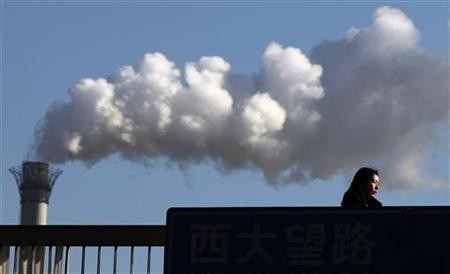
Though Paris was in the headlines recently for its alert against hazardous atmospheric particles, it does not feature in the list of the world's most polluted cities but India's Ludhiana and Kanpur do.
According to WHO report, Ludhiana ranks fourth among the most polluted cities in the world, while Kanpur holds ninth position. The report was based on WHO's health guidelines and is measured as a yearly average.
Pollution is measured in microgramme (mcg) concentration per cubic metre of air of particulate matter.
Here is the list of the world's 10 most polluted cities as compiled by WHO:
1) Ahvaz, Iran 372 mcg/m3 (2009 data)
2) Ulan Bator, Mongolia 279 mcg/m3 (2008 data)
3) Sanandaj, Iran 254 mcg/m3 (2009 data)
4) Ludhiana, India (2008 data) and Quetta, Pakistan (2003/4 data) tied at 251 mcg/m3
5) Kermanshah, Iran 229 mcg/m3 (2009 data)
6) Peshawar, Pakistan 219 mcg/m3 (2003/4 data)
7) Gaborone, Botswana 216 mcg/m3 (2005 data)
8) Yasuj, Iran 215 mcg/m3 (2009 data)
9) Kanpur, India 209 mcg/m3 (2008 data)
10) Lahore, Pakistan 200 mcg/m3 (2003/4 data)
Paris is among the other highly polluted cities in the world. The pollution levels of Paris reached 180mcg/m3 in March 2014 as compared to the 2008 data, when the city had an annual mean level of 38 mcg/m3. Meanwhile, Beijing has a yearly mean figure of 121 mcg/m3.
North Africa and Middle East are two of the world's most polluted regions with an annual mean level of more than 130 mcg/m3, and Southeast Asia with 100 mcg/m3 level.
According to the UN health body, over two million people are estimated to die every year from breathing outdoor and indoor particle pollution.
The particles are released into the atmosphere due to burning petrol and diesel from vehicle combustion or coal, charcoal, fuel wood and animal waste for cooking and heating. Polluting gases such as ozone, nitrogen oxide and sulphur dioxide are potential irritants to the eyes.
Even weather conditions can affect the pollution to high levels, like in Paris where atmospheric particles were trapped by high pressure system; thus causing little wind during sunny days and cold nights.









